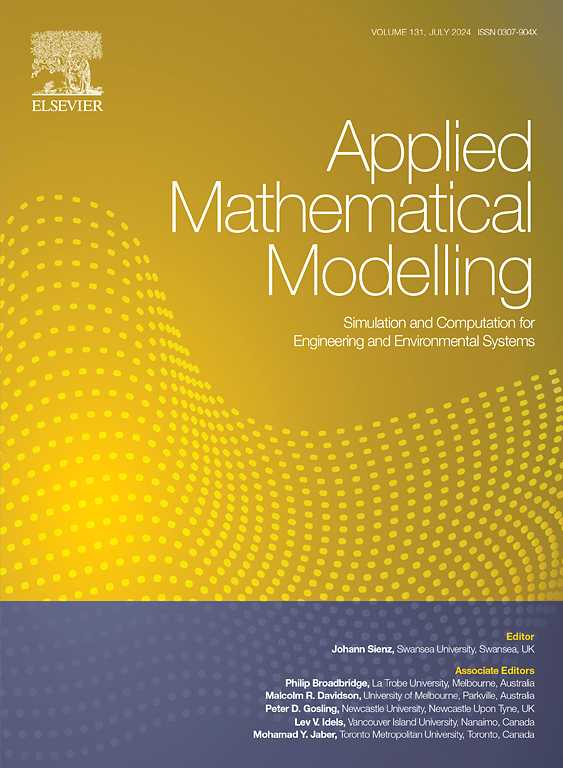A thermodynamic constitutive model based on uncoupled physical mechanisms for polymer-based shape memory composites and its application in 4D printing
IF 4.4
2区 工程技术
Q1 ENGINEERING, MULTIDISCIPLINARY
引用次数: 0
Abstract
Four-dimensional (4D) printing is a new interdisciplinary research field that integrates sophisticated manufacturing, smart materials and mechanics. Shape memory polymer (SMP) and their composites (SMPCs) have been widely used in the field of 4D printing due to their smart and rapid response. Thus, we develop a novel thermodynamic constitutive model for SMP and SMPC, and investigate its application in 4D printing. Structure relaxation and stress relaxation are considered to follow different physical mechanisms but are related by an internal thermodynamic state variable that can represent the non-equilibrium structure. Founded on the thermodynamic variable, a physics-based fictive temperature theory is constructed for structure relaxation, and also a new stress relaxation model is proposed to characterize the time-dependent behaviors related to mechanical changes. It is shown that the influences of temperatures, strain rates, pre-strains, reinforcing fillers, and recovery conditions on stress-strain and shape memory responses are well predicted by the thermodynamic constitutive model.
基于非耦合物理机制的聚合物形状记忆复合材料热力学本构模型及其在4D打印中的应用
四维(4D)打印是一个新的跨学科研究领域,集精密制造、智能材料和力学于一体。形状记忆聚合物(SMP)及其复合材料(smpc)因其智能、快速的响应特性在4D打印领域得到了广泛的应用。因此,我们建立了一种新的SMP和SMPC的热力学本构模型,并研究了其在4D打印中的应用。结构松弛和应力松弛被认为遵循不同的物理机制,但由一个可以表示非平衡结构的内部热力学状态变量联系在一起。在热力学变量的基础上,建立了基于物理的结构松弛理论,并提出了一种新的应力松弛模型来表征与力学变化相关的随时间行为。结果表明,温度、应变速率、预应变、补强填料和恢复条件对应力-应变和形状记忆响应的影响可以用热力学本构模型很好地预测。
本文章由计算机程序翻译,如有差异,请以英文原文为准。
求助全文
约1分钟内获得全文
求助全文
来源期刊

Applied Mathematical Modelling
数学-工程:综合
CiteScore
9.80
自引率
8.00%
发文量
508
审稿时长
43 days
期刊介绍:
Applied Mathematical Modelling focuses on research related to the mathematical modelling of engineering and environmental processes, manufacturing, and industrial systems. A significant emerging area of research activity involves multiphysics processes, and contributions in this area are particularly encouraged.
This influential publication covers a wide spectrum of subjects including heat transfer, fluid mechanics, CFD, and transport phenomena; solid mechanics and mechanics of metals; electromagnets and MHD; reliability modelling and system optimization; finite volume, finite element, and boundary element procedures; modelling of inventory, industrial, manufacturing and logistics systems for viable decision making; civil engineering systems and structures; mineral and energy resources; relevant software engineering issues associated with CAD and CAE; and materials and metallurgical engineering.
Applied Mathematical Modelling is primarily interested in papers developing increased insights into real-world problems through novel mathematical modelling, novel applications or a combination of these. Papers employing existing numerical techniques must demonstrate sufficient novelty in the solution of practical problems. Papers on fuzzy logic in decision-making or purely financial mathematics are normally not considered. Research on fractional differential equations, bifurcation, and numerical methods needs to include practical examples. Population dynamics must solve realistic scenarios. Papers in the area of logistics and business modelling should demonstrate meaningful managerial insight. Submissions with no real-world application will not be considered.
 求助内容:
求助内容: 应助结果提醒方式:
应助结果提醒方式:


